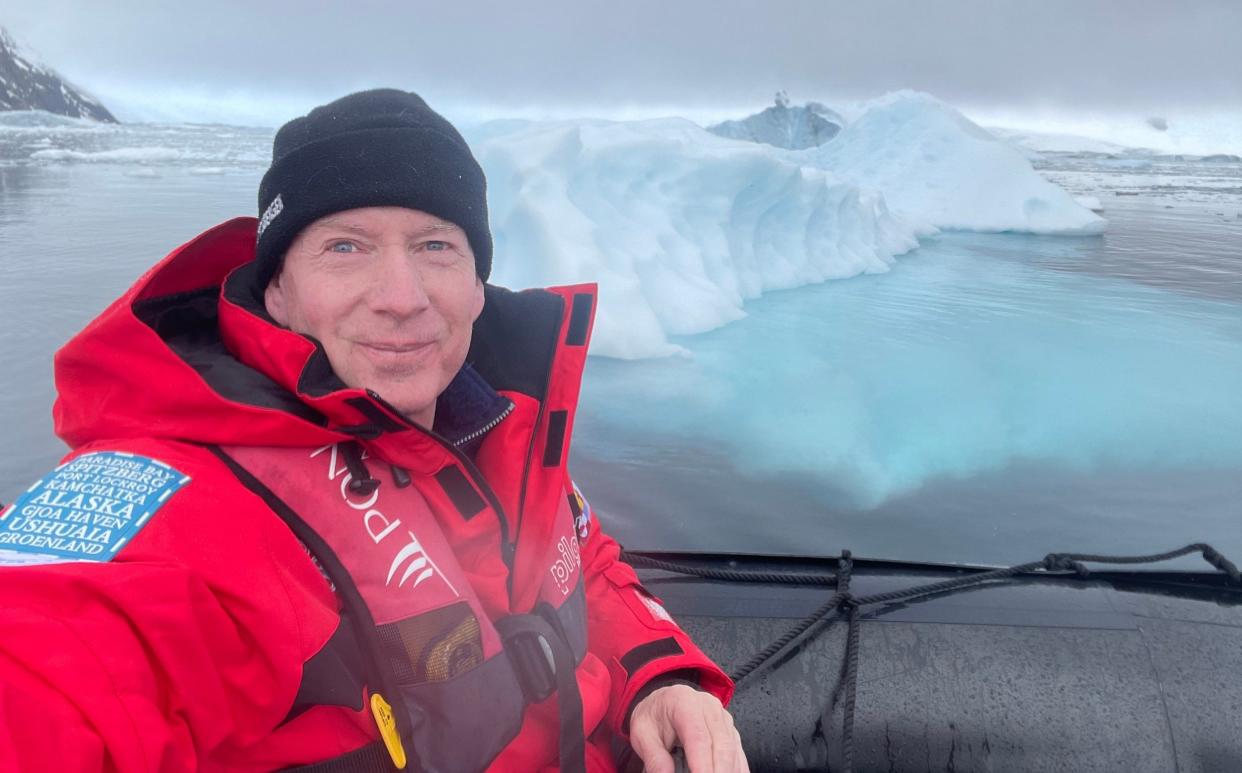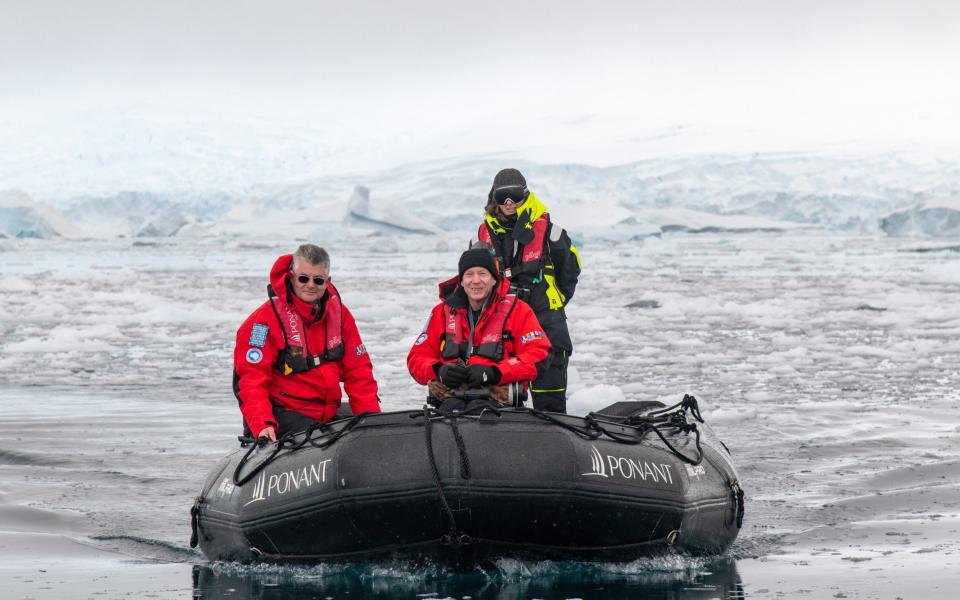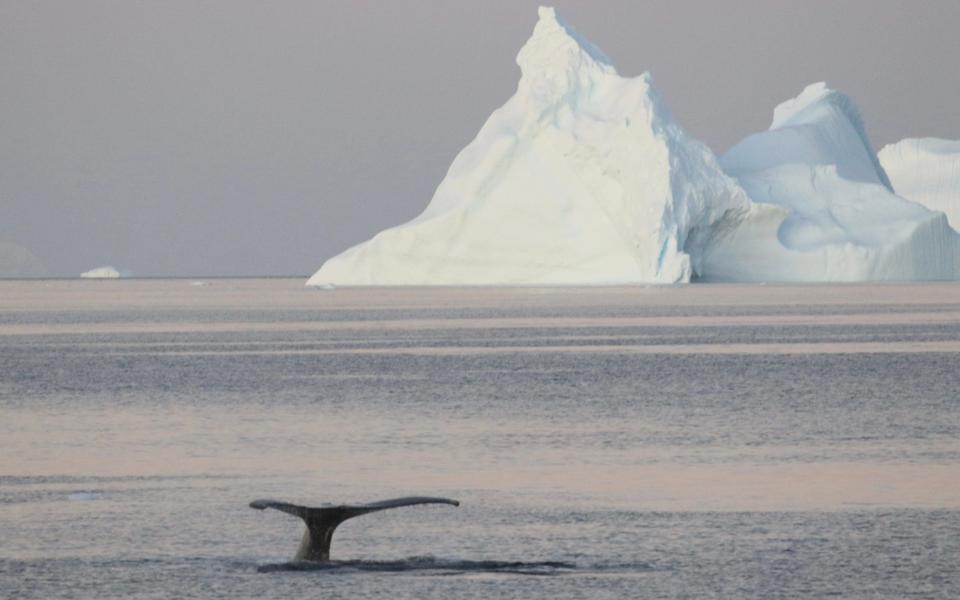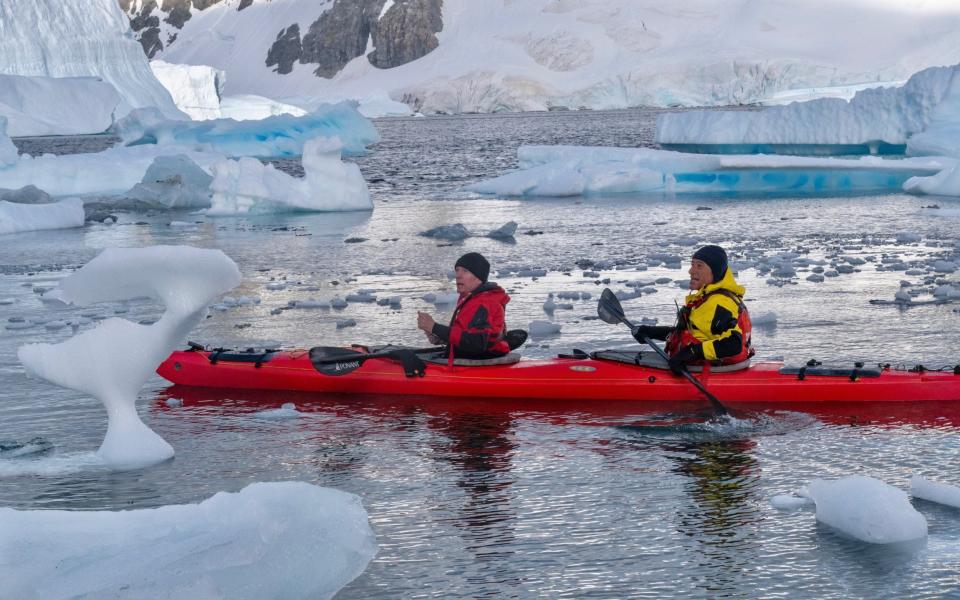Antarctica with a wheelchair? No problem

Out of the fog, white and ghostly, gliding on silent outstretched wings, came an albatross. Its wingtips kissed the wind-tossed waves as it circled our ship, flying almost perpendicular to the heaving ocean below. We had entered the dreaded Drake Passage, the notoriously rough stretch of sea between the southernmost tip of South America and the outstretched arm of Antarctica.
But this was our first encounter with the wildlife of the White Continent, dubbed by some the greatest wilderness on Earth, and for a moment we forgot the lingering nausea that can accompany this choppy two-day passage.

There are a number of ways to reach Antarctica: all are expensive and all take time. You can fly from South Africa straight to the South Pole, but that is not where the wildlife lives. The penguins, whales, seals and orcas are all on or just off the Antarctic coast, so by far the best way to see them is to base yourself on an ocean-going ship that sets off from either Punta Arenas in Chile or Ushuaia in Argentina.
We chose the latter, signing up with a French cruise ship operator, Ponant, for a 10-day voyage that would take us deep into the land of icebergs.
I have to admit, I had misgivings. None of us had ever been on a cruise before and we envisaged nightly compulsory bingo and karaoke sessions at sea or queuing up with a tray for mass- produced canteen meals.
Then there was the small matter of my being in a wheelchair, paralysed in the legs ever since a terrorist attack in Saudi Arabia nearly 20 years ago. The trip involved up to two daily excursions ashore in inflatable speedboats called Zodiacs. I was braced for some Gallic shrugs and apologetic mutterings of “pardon, mais c’est trop compliqué, ce n’est pas possible”.
I was wrong on every count. For a start, the highly professional Ponant crew reminded us that this was not a cruise, it was “an expedition”, and they were determined to let me experience it to the full. We would be venturing into remote and hostile terrain, they told us, in sometimes demanding weather conditions.
Within hours of boarding the 466ft-long Le Boreal, I was summoned to its medical room to thrash out with the ship’s doctor and expedition leaders just how exactly we would get me from the ship onto a Zodiac and then ashore without dropping me into the Antarctic Ocean.

I could see the scepticism on their faces but I had a secret weapon up my sleeve. I showed them a video on my phone of me skiing in a sit-ski, using my hips to turn as I hurtled down a Swiss piste.
It was enough to convince them I was not going to topple sideways out of a kayak and drown at 66 degrees south. (I should point out that Ponant does take passengers with even less mobility than me; it would probably just be more cautious about which activities they can undertake.)
That first night onboard Le Boreal lulled us into a false sense of calm. As dusk fell over Ushuaia, the southernmost inhabited town on Earth, we left our moorings and slid eastwards through the Beagle Channel under a moonless sky; Argentina to the north of us, Chile to the south.

Down on the restaurant deck, French wine flowed and immaculately dressed waiters served us smoked salmon and Argentinian steaks. Now it definitely felt more like a cruise than an expedition.
But at some time around midnight, as we lay asleep in our cabins – sorry, “state rooms” – we began to feel the force of the Drake Passage as the ship started to lurch from side to side. We had been warned about this in a weather briefing from the captain.
This far south on the planet there is no land mass to stop the howling winds tearing straight through from west to east, and they can reach speeds of up to 125mph. Luckily for us, weather maps have advanced to such an extent that experienced sailors can judge when to steer through the 12-hour gaps between the low-pressure storms and avoid the worst of the heaving seas.
Still, two out of our eight-strong band were seasick and it was something of a challenge to manhandle my wheelchair down carpeted corridors as the ship shifted this way and that.

At some point during our crossing of the Drake Passage we traversed what is known as the Antarctic Convergence. This is where the cold, deep waters off the frozen continent meet the relatively warmer waters off South America. Out on deck, braving the winds, we could feel the temperature dropping almost by the hour – and then, looming eerily off the port bow, came the hazy grey outline of rocky cliffs.
We had reached the South Shetland Islands, the sentinels that guard the approach to the Antarctic Peninsula. Straining my eyes through binoculars, I peered through the mist at our first colony of penguins, clustered together on a bleak, windswept shore. And then suddenly there they were, chinstrap penguins, swimming all around the ship, “porpoising” as they propelled themselves for a short distance above the waves, as if trying to defy evolution and their consigned status as flightless marine birds.
The next excitement came with the sighting of our first icebergs, small at first but growing ever larger and more impressive as we forged south. Up on the bridge, where a look-out kept permanent watch with binoculars, the staff captain talked me through the different categories. The smallest is “brush ice”, not enough to trouble the reinforced hull of Le Boreal. Then comes “bourguignon”, so named by a French captain because its size resembles that of a wine barrel. Then there are “growlers”, medium-sized chunks of ice that are dangerous enough to be avoided.
Finally, there are full-sized icebergs. “Only 18 per cent of an iceberg is visible above water” the captain said. “That is what makes them so dangerous”.

It was time to go ashore. In small groups we gathered at the stern, dressed in our thermals, parkas and life jackets, for the journey by Zodiac to our first landfall: Cuverville Island. The crew were commendably strict about bio-security. To avoid bringing any lethal diseases ashore, everyone had to dip their boots into a disinfectant solution. Everything – even my leather camera bag – had to be wiped down and sanitised. After a short, fast bounce across the waves I was piggy-backed onto the rocky shore, where my sanitised wheelchair awaited.
I am going to be blunt here: penguin colonies stink. Their slimy excrement turns the snow green and the smell is something else. But it was worth it for the endearing sight of these lovable creatures – gentoo penguins, in this case – as they hobbled and tottered around on webbed orange feet. Antarctica is a protected landmass and although we were warned not to approach them, plenty of these strange birds waddled right past us, oblivious to our presence.
Further south, the air was colder. A cry went up on deck: humpback whales! In the still, frozen air they were “fluking”, their massive tails disappearing beneath the waves then rolling on their sides to show a barnacle- encrusted fin as they sang their strange songs to each other. It was a moment of such intensity that more than a single tear was shed on deck that day.
There is something truly magical about seeing whales, seals and albatrosses down here at the bottom of the world in their natural environment, and spending 10 days in a place where you see not a single soul except those on the ship. There is no distant hum of traffic, there are no aircraft contrails in the sky. This is Antarctica, and it is a rare and precious privilege to see it.

And the highlight for me? Without question it was the morning we went kayaking through broken sea ice around the remote Danco Island. For two hours straight we paddled through one of the most thrilling landscapes on the planet. My arms ached, my fingers were numb with cold, but the smile on my face was as wide as a whale. It will remain with me as one of the most liberating experiences of my life.
Frank Gardner OBE is the BBC’s security correspondent, president of the British Trust for Ornithology and author of the Luke Carlton series of spy novels.
Essentials
Ponant (0808 234 3802; en.ponant.com) offers a 10-day Antarctica: The White Continent cruise on board Le Boreal, departing from Buenos Aires on February 25 2024 from £10,240 per person based on two people sharing a Prestige stateroom cabin.
The price includes accommodation, all meals, non-alcoholic and alcoholic drinks (house wine, spirits and champagne), mini-bar and 24/7 room service. Also included is a pre-cruise package with an overnight stay in Buenos Aires, a round-trip flight (Buenos Aires/Ushuaia/Buenos Aires) and transfers. International flights cost extra.


